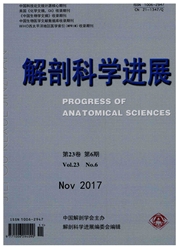

 中文摘要:
中文摘要:
周围神经损伤后,神经支配区的运动、感觉、营养等功能障碍,表现为运动功能丧失,肌肉萎缩,感觉减退等。尽管周围神经具有再生能力,功能恢复并不理想,这主要是由于神经再生时缺乏选择性,形成无效靶器官连接,最终影响功能重建。本文对近年来相关文献进行综述,从神经营养因子、黏附分子、雪旺细胞和导向分子等多方面探讨影响周围神经再生选择性因素和可能机制。为进一步了解选择性再生的分子基础,促进有效的功能修复奠定基础。
 英文摘要:
英文摘要:
Peripheral nerve injuries may result in dysfunction of the motor, sensation and nutrition at the innervation area of the defected nerve. Patients in clinic have to suffer from the paralyzed muscle, withered skin and loss of sense. Although the peripheral nervous system retains a considerable capacity of regeneration, the functional recovery is rarely restored to the pre-injury level, along with poor prognosis. This is primarily caused by the lack of regeneration selectivity, or regeneration of axons into inappropriate distal nerve or end organs, which may adversely affect functional recovery even with a good morphological recovery. This review aims at presenting an overview of contributing factors to preferential motor reinnervation, including neurotrophic factors, adhesion molecules, guiding molecules and Schwann cells, in order to promote our understanding of the mechanism involved in the selective targeting of regenerating peripheral nerves.
 同期刊论文项目
同期刊论文项目
 同项目期刊论文
同项目期刊论文
 期刊信息
期刊信息
